The BRAWL² Tournament Challenge has been announced!
It starts May 12, and ends Oct 17. Let's see what you got!
https://polycount.com/discussion/237047/the-brawl²-tournament
It starts May 12, and ends Oct 17. Let's see what you got!
https://polycount.com/discussion/237047/the-brawl²-tournament
The Logic of Fight Scene Design

My demo reel: https://youtu.be/WUo543ztkcg
The Logic of Fight Scene Design
Having been working on animation and combat system for almost 10 years, I’m credited on several action games as art director and finished the main character animations by myself. I worked directly with multiple departments on combat system, and also designed both cinematic and in-game fighting parts.
In this post, I would like to share my experience and knowledge of cinematic fight scene design.
Since realistic fight tactics are very logical, the sequence and theoretical framework could be easily sorted out. Therefore, here I will mainly discuss the logic of realistic fight design, rather than unconstrained fictional fight designs, although many of the latter are also fantastic.
Practical fighting is usually not good-looking in posture, while those nice postures are usually weak in attack. It is tricky to make a balance between the appearance and its practicality. A good design of a fight scene should be both attractive and reasonable, whether armed or unarmed, especially in Chinese Martial Arts, where the sequence of tactics and postures are emphasized, different genres differ in tactics. Amateurs only enjoy the fun, but professionals would see the logic.
Here I will sum up the theoretical framework. To make it easy to understand, I will use diagrams and GIFs.
Theoretical Framework
Suppose Blue lead the attack. Red has three options: Option 1, Intercept; Option 2, Parry, Block, Borrow force, Dodge, Get hit (set as Action Group1), then Riposte; Option 3, end the round after Action Group1.
a) In responding to Red’s Intercept, Blue could choose Action Group1 as a plan, or even choose only block and get hit, due to insufficient time, unless Blue was delivering a feint from the beginning.
b) In responding to Red’s Action Group1 then Riposte, Blue could intercept or choose Action Group1.
c) If Red loses the opportunity to Riposte after Action Group1, this round would be over and a new round would start, then both sides would return to the state of confrontation.
Let’s start from designing a simple fight:
Red leads by punching, and Blue slides to dodge and counter. Red blocks it and delivers a kick. Blue gets hit and both sides turn into a standoff.
Next, a more complicated fight could be designed:
Red leads by hooking, and Blue intercepts by punching. Red gets hit and Blue follows up with hooking. Red blocks and Blue follows up with side kicking. Red grapples his leg and throws him by borrowing force, then locks his leg. Blue strikes Red to escape. Both sides enter into a standoff.
Red leads by hooking, and Blue intercepts by punching. Red gets hit and Blue follows up with hooking. Red blocks and Blue follows up with side kicking. Red grapples his leg and throws him by borrowing force, then locks his leg. Blue strikes Red to escape. Both sides enter into a standoff.
From the diagram, you might have noticed, that after we take out the start and end, what remains is actually the most important thing to repeat the loop—“Attack and Defense Transition”.
There are 6 ways to accomplish Attack and Defense Transition: Intercept, Dodge- Riposte, Block- Riposte, Borrow force- Riposte, Get hit- Riposte, Parry- Riposte.
Intercepting
Attack is the best defense. Quickly prejudge the movement of the opponent, and deliver a prompt blow. Hurt the opponent before getting hurt by him. Intercept, rather than only defense, you see clearly the opponent’s attack and stop it. This is the best way to strike enemy at the lowest cost. Intercept needs the greatest skill, the most perfect planning and the most delicate execution of all fighting techniques.
Borrowing force
When the opponent delivers a blow, you need to judge its strength and direction. Pull the opponent in the direction of his blow. Make him off-balance and create opening for counter-blow. Borrowing force is a good strategy.
Parrying
Parry is using reverse or deflecting motion to break opponent’s blow and protect the threatened area.
To parry a blow not only makes openings for counter-blows, but also disrupt opponent’s plan.
Dodging
During fighting, it is good to use footwork – duck and counter, snap back and return, slip and punch. Dodge is a way to avoid being attacked without body contact. You should catch the chance of counterattack, or it would quickly disappear. Meanwhile, be careful about the opponent’s follow-up actions.
During fighting, it is good to use footwork – duck and counter, snap back and return, slip and punch. Dodge is a way to avoid being attacked without body contact. You should catch the chance of counterattack, or it would quickly disappear. Meanwhile, be careful about the opponent’s follow-up actions.
Blocking
Blocking, as the most passive means of defense, should only be used when there is no other choice, because it doesn’t help to conserve bodily force but actually weakens it. There is very little chance to strike back after blocking, and there is even guard break due to the opponent’s severe attack, since you would lose balance, or be constrained from counterattack by the opponent’s follow-up actions.
Getting hit
When you get hit, you can also throw a counter-blow in the direction of knockback. It is similar to borrowing force. You have even more chances for counterattack when you were grappled or thrown.
When you get hit, you can also throw a counter-blow in the direction of knockback. It is similar to borrowing force. You have even more chances for counterattack when you were grappled or thrown.
Break grappling and throwing technique also belong to Getting hit-riposte. To cope with this, you could break first, and then riposte, or do it in reverse order
It uses all phases of grappling, kicking and hitting, and also cold weapon combat. The core principle is to make the enemy suffer the biggest damage at the lowest cost.
Generally, the immediate riposte is the most effective as it forces the opponent to be on the defensive. To ensure its effectiveness, Pay particular attention to the efficient gap-bridging of the “Action Group1” and riposte. They must be made before the opponent has opportunity to change from offense to defense.
Blocking and parry are opposite to the opponent's blow.
Borrowing force and dodge work in line with the opponent's blow. First two are soft, like aikido and Taichi fighting techniques. The latter two are firm, like Muay Thai and Baji Quan fighting techniques.
Next time I will write about other points such as camera work, rhythm of fight, character personality setting, performance, interaction with scene, etc. Also, I would like to talk about the use of fighting logic in AI field.
Okay, see you next time!

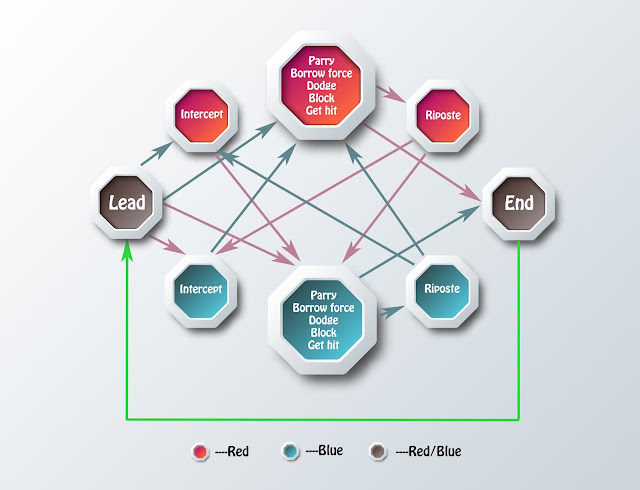


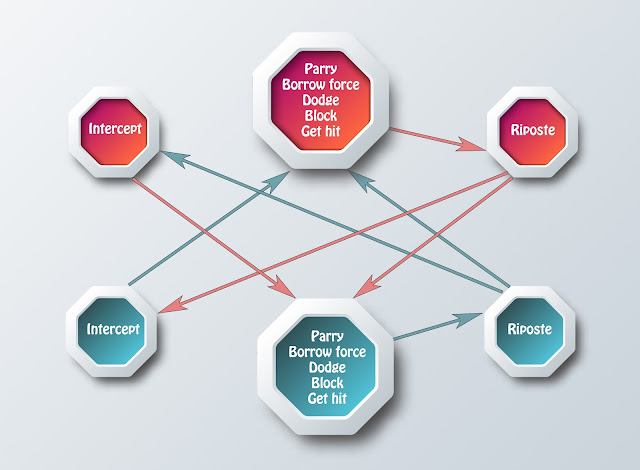

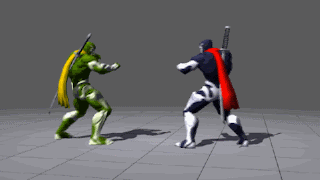
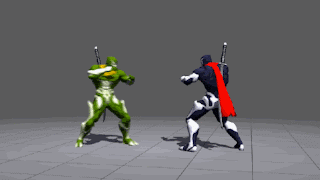
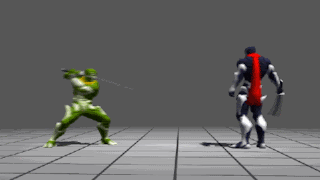
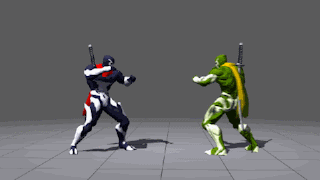
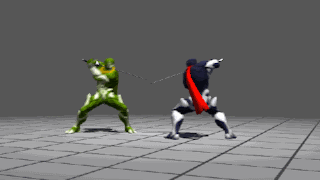
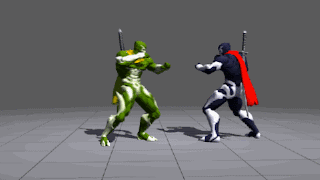
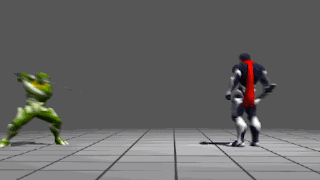

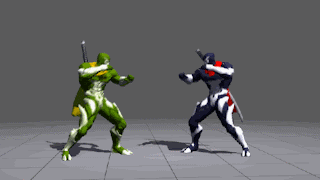

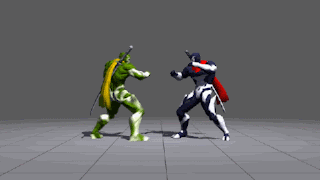
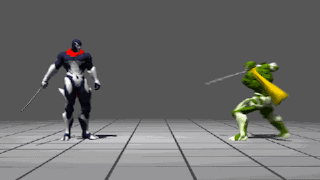


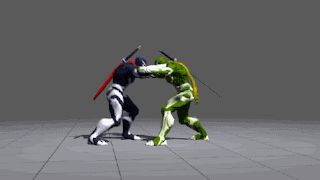
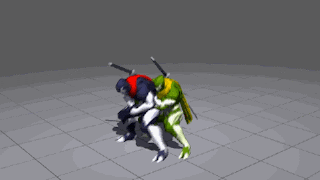
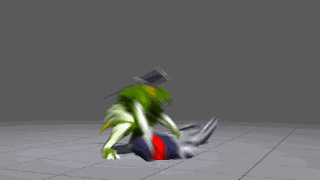

Replies
Although.....I wish the green guy would have won some of his fights. Poor guy.